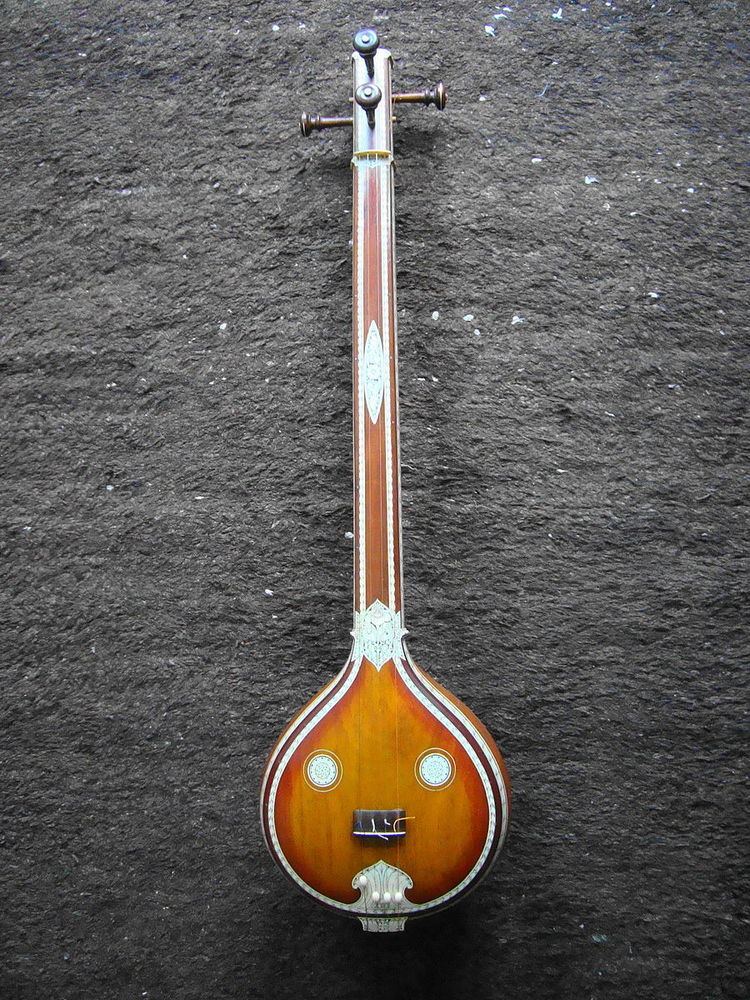 | ||
Abhogi (pronounced ābhōgi) is a raga in Carnatic music and has been adapted to Hindustani music. It is a pentatonic scale, an audava or owdava raga. It is a derived scale (janya raga), as it does not have all the seven swaras (musical notes). Ābhōgi has been borrowed from Carnatic music into Hindustani music and is also quite popular in the latter.
Contents
Structure and Lakshana
Ābhōgi is a symmetric pentatonic scale that does not contain panchamam and nishadam. It is called an audava-audava raga, in Carnatic classification, as it has 5 notes in both ascending and descending scales. Its ārohaṇa-avarohaṇa structure is as follows (see swaras in Carnatic music for details on below notation and terms):
The notes used are shadjam, chathusruti rishabham, sadharana gandharam, shuddha madhyamam and chathusruthi dhaivatham. Ābhōgi is considered a janya raga of Kharaharapriya, the 22nd Melakarta raga, though it can be derived from Gourimanohari too, by dropping both panchamam and nishadam.
Popular compositions
Abhogi is a scale that is used for compositions in a medium to fast tempo. This scale has been used by many composers and there are lots of compositions in classical music. It has been used to score film music too. Here are some popular compositions in Abhogi.
Related ragas
This section covers the theoretical and scientific aspect of this raga.
Graha bhedam
Ābhōgi's notes when shifted using Graha bhedam, yields another pentatonic rāgam Valaji. Graha bhedam is the step taken in keeping the relative note frequencies same, while shifting the shadjam to the next note in the rāgam. For more details and illustration of this concept refer Graha bhedam on Ābhōgi.
P.Moutal understands raag Kalavati as transposition of Abhogi.
Scale similarities
List of compositions in Abhogi
sumasara haravara sudati
adi sri saint gnanananda teertha ( sri ogirala veera raghav sarma garu), the saint composer of 20 th century
There are also some Tamil movie songs based on the raga of abhogi. Songs in abhogi raga gives extreme pleasure to ears. Two Tamil songs are cited below for the reference.
- Indraiku en inta aanandame from the film vaidhegi kaathiruntal, music composed by Ilayaraja
- Kaalai nera poonguyil from the film Amman kovil kizhakale also composed by Ilayaraja
Arohana & Avarohana
Vadi & Samavadi
Jeeva Swaras
G and D
Pakad or Chalan
GMDS SDRSDMD_ D_SRGRS D_RSDM GMMDDSDRSD_M GMD_MGGRR_ GRSd Rd_S
Organization & Relationships
Pa and Ni are omitted. Also Re is often omitted in ascent. Flat Ga is often approached from Ma in ascent and has a slight oscillation to show the typical Kanada. In descent often the typical Kanada phrase gMRS is used.
Related ragas: Bageshree. However, Bageshree also includes flat Ni and a limited use of Pa, which gives a different flavour.
Thaat: Kafi.
Samay (Time)
Night, approximately 9PM-12AM.
Important Recordings
Literature
Bor, Joep (ed). Rao, Suvarnalata; der Meer, Wim van; Harvey, Jane (co-authors) The Raga Guide: A Survey of 74 Hindustani Ragas. Zenith Media, London: 1999.
Moutal, Patrick (1991), Hindustāni Rāga-s Index, New Dehli: Munshiram Manoharlal Publishers Pvt Ltd, ISBN 81-215-0525-7
